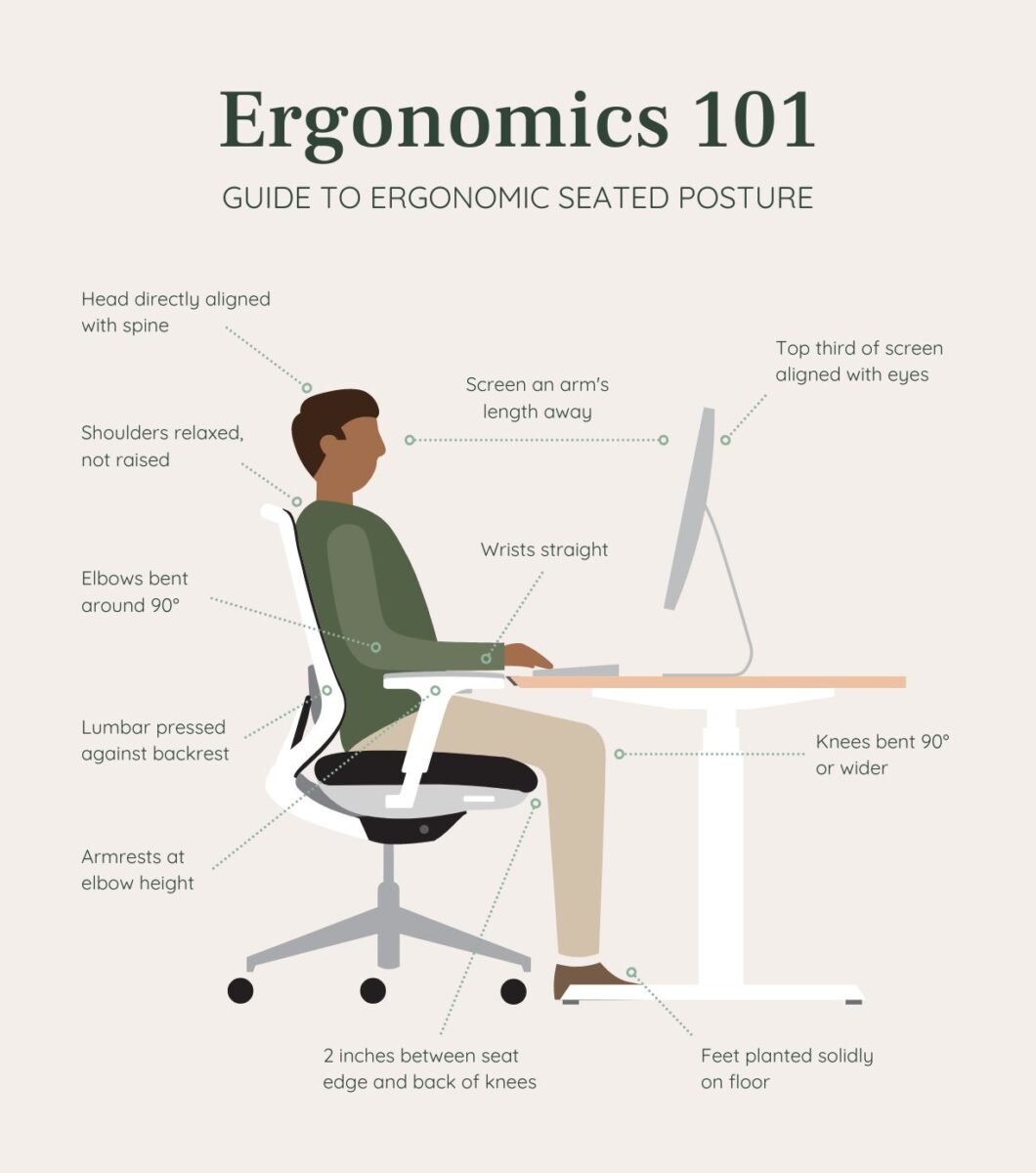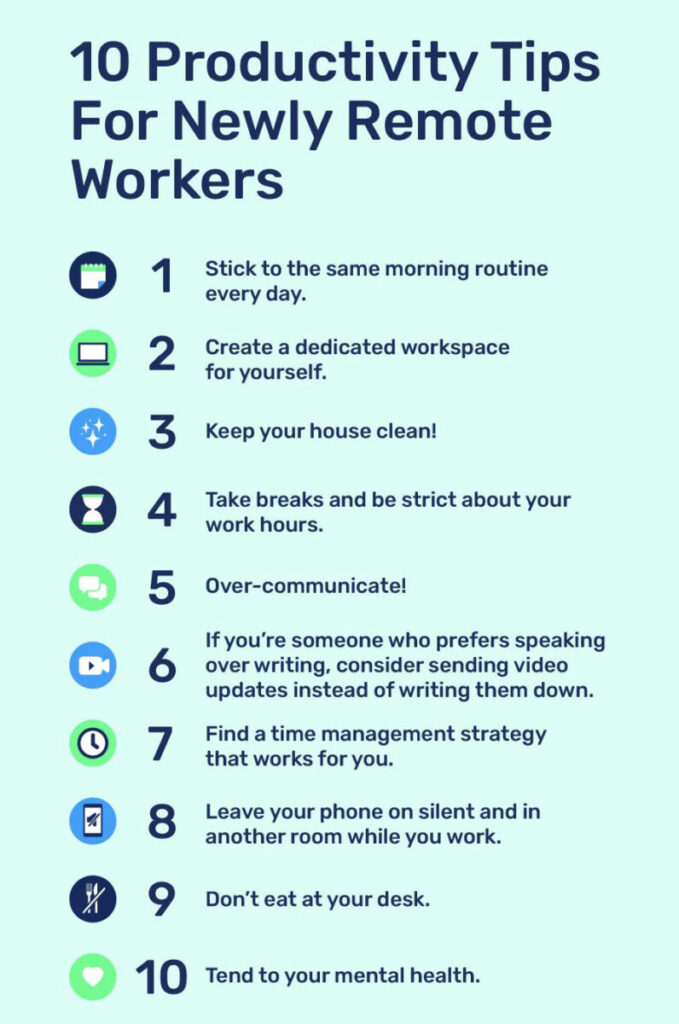Desk workers face unique challenges in maintaining their health and well-being due to long hours spent at a desk. Consequently, the sedentary nature of this lifestyle often leads to common health issues such as back pain, eye strain, and poor posture. Understanding the importance of staying healthy at work is crucial for enhancing productivity and overall quality of life. By implementing effective health hacks, desk workers can create a more balanced and energetic work environment.
The Importance of Staying Healthy at Work
Maintaining health while working is essential, especially for desk workers who spend long hours seated. A healthy workplace not only boosts individual well-being but also enhances productivity and job satisfaction. Here are several key reasons why staying healthy at work is crucial for desk workers:
- Reduces Health Risks: Prolonged sitting leads to various health issues, such as obesity, cardiovascular diseases, and musculoskeletal disorders. Staying healthy can significantly lower these risks.
- Enhances Focus and Productivity: Regular physical activity and proper nutrition improve cognitive functions. Desk workers who prioritize their health often find themselves more focused and productive throughout the day.
- Improves Mental Well-being: Maintaining physical health directly correlates with mental health. Exercise and a balanced diet can reduce stress, improve mood, and enhance overall mental wellness, which is critical for desk workers facing deadlines and high workloads.
- Promotes Work-Life Balance: When desk workers adopt healthy routines, they foster a better work-life balance. This balance reduces burnout and increases job satisfaction, leading to a more positive work environment.
In summary, prioritizing health at work is vital for desk workers. By implementing simple health strategies, they can not only enhance their well-being but also contribute to a more productive and harmonious workplace atmosphere.

Common Health Issues for Desk Workers
Desk workers often face a range of health issues due to prolonged periods of sitting and limited physical activity. Understanding these potential problems helps mitigate their impact. Here are some common health issues that many desk workers experience:
- Musculoskeletal Disorders: Poor posture can lead to back, neck, and shoulder pain. Desk workers frequently complain about discomfort stemming from inadequate ergonomics in their workspaces.
- Eye Strain: Staring at computer screens for extended periods can cause digital eye strain, leading to headaches, blurred vision, and dry eyes. This is often known as computer vision syndrome.
- Obesity: Sedentary lifestyles contribute to weight gain among desk workers. Lack of regular movement makes it easy to consume more calories than burned, resulting in increased body weight.
- Mental Health Issues: The stress of deadlines and a lack of physical activity can lead to anxiety and depression. Desk workers may feel isolated or find it difficult to maintain a work-life balance.
- Cardiovascular Problems: Prolonged sitting increases the risk of heart disease. Desk workers may experience reduced circulation, which can contribute to various heart-related issues over time.
Being aware of these common health concerns enables desk workers to take proactive steps towards maintaining their health, such as incorporating movement into their day and optimizing their work environment.
Ergonomics: Setting Up Your Workspace
Creating an ergonomic workspace is crucial for desk workers to maintain comfort and prevent health issues. An ideal setup minimizes strain, allowing desk workers to focus on their tasks without distractions from discomfort.
Key Ergonomic Principles
- Chair Height: Adjust your chair so your feet rest flat on the floor, with your knees at a 90-degree angle.
- Desk Height: Ensure your desk is at elbow height when you sit, promoting a neutral wrist position while typing.
- Monitor Position: Position your monitor about an arm’s length away, with the top of the screen at eye level. This prevents neck strain and promotes good posture.
- Keyboard and Mouse Placement: Keep your keyboard and mouse close to each other to avoid overstretching. Your wrists should remain straight while you use them.
- Lighting: Use proper lighting to reduce glare on your screen. Natural light, when possible, promotes well-being.
Ergonomic Setup Comparison
| Component | Proper Ergonomics | Poor Ergonomics |
|---|---|---|
| Chair Height | Feet on the floor, knees at 90° | Feet lifted, knees above hips |
| Monitor Position | Eye level, arm’s length away | Too high or too low, too close |
| Keyboard Angle | Flat, wrists straight | Tilted, wrists bent |
By implementing these ergonomic adjustments, desk workers can significantly enhance comfort and productivity, leading to a healthier and more efficient work environment.
Simple Exercises to Do at Your Desk
Desk workers often find themselves sitting for prolonged periods, leading to various health issues such as muscle stiffness and poor circulation. However, incorporating simple exercises into your day can significantly improve your wellbeing. Here are some effective exercises you can do without leaving your workspace:
- Neck Stretches: Gently tilt your head towards each shoulder, holding for 15-30 seconds. This relieves tension and improves flexibility.
- Shoulder Rolls: Roll your shoulders forward and backward in circular motions. Repeat 10 times to alleviate shoulder stiffness.
- Wrist and Finger Stretch: Extend your arm, palm up. Use your other hand to gently pull back your fingers to stretch the wrist. Hold for 15 seconds and switch hands.
- Seated Leg Extensions: While sitting, extend one leg straight out and hold for a few seconds before lowering. Alternate legs to enhance circulation.
- Desk Push-Ups: Place your hands on the edge of your desk, step back, and perform push-ups at an angle. This boosts upper body strength and engages your core.
- Calf Raises: Stand up and slowly lift your heels off the ground, balancing on your toes. Lower back down and repeat 10-15 times to strengthen your calves.
By integrating these quick exercises, desk workers can counteract the negative effects of sedentary behavior, ensuring a more productive and healthier work environment.

Incorporating Movement into Your Day
For desk workers, incorporating movement throughout the day is crucial to mitigate the negative effects of prolonged sitting. Movement not only enhances circulation but also boosts productivity and overall well-being. Here are effective strategies desk workers can integrate into their routines:
- Set a Timer: Use a timer to remind you to stand or stretch every hour. Just a 5-minute movement session can energize you and break the monotony.
- Walking Meetings: Whenever possible, opt for walking meetings. This fosters creativity and allows you to stay active while discussing work-related topics.
- Desk Exercises: Perform simple exercises at your desk, such as:
- Seated leg lifts: Strengthens your legs without leaving your chair.
- Desk push-ups: Use your desk as support to engage your upper body.
- Stair Climbing: Choose stairs over elevators. It provides an excellent cardio workout and helps strengthen your legs.
- Lunchtime Walks: Utilize your lunch break for a brisk walk outdoors. This not only helps you stay active but also refreshes your mind.
| Activity | Duration | Benefits |
|---|---|---|
| Standing/stretching | 5 mins each hour | Improves circulation |
| Walking meetings | 30 mins | Boosts creativity and engagement |
| Desk exercises | 10 mins | Strengthens muscles and reduces stiffness |
By proactively incorporating these movements into their daily routine, desk workers can significantly enhance their physical and mental health, ensuring a balanced workday experience.
Healthy Snack Ideas for Desk Workers
Desk workers often face the challenge of maintaining energy levels throughout the day. Choosing the right snacks can make a significant difference in productivity and overall well-being. Here are some healthy snack options that are both nutritious and easy to keep at your workspace:
- Fresh Fruit: Apples, bananas, and berries are portable and rich in vitamins. They provide a quick energy boost without the crash.
- Yogurt: A great source of protein and probiotics, yogurt promotes digestive health. Opt for low-sugar varieties and consider adding some granola for crunch.
- Nuts and Seeds: Almonds, walnuts, and pumpkin seeds are perfect for desk workers. They offer healthy fats, keeping you full longer while supporting brain function.
- Vegetable Sticks: Carrot, celery, and bell pepper sticks pair well with hummus or guacamole, providing fiber and necessary vitamins.
- Whole-Grain Snacks: Whole-grain crackers or rice cakes topped with avocado or low-fat cheese can satisfy midday cravings while maintaining energy levels.
- Dark Chocolate: A small piece of dark chocolate can satisfy your sweet tooth and provide antioxidants.
By incorporating these snacks into your diet, desk workers can combat fatigue and promote sustained focus. Remember, the goal is to choose snacks that are not only enjoyable but also enhance your health and productivity throughout the workday.
If you want to buy healthy snacks, food warmers, lunch boxes or bags from Amazon, please click here.
Hydration: The Key to Staying Energized
For desk workers, staying hydrated is crucial for maintaining energy levels and enhancing overall productivity. Dehydration can lead to fatigue, decreased focus, and even headaches, which can severely impact your performance at work. Here are some effective tips to ensure you remain well-hydrated throughout your workday:
- Set a Water Intake Goal: Aim for at least 8-10 cups of water daily. Tracking your intake can encourage consistency.
- Keep Water Accessible: Fill a reusable water bottle and keep it at your desk. This constant visual reminder will help you sip throughout the day.
- Use Technology: Consider hydration apps or reminders on your phone to alert you when it’s time to drink.
- Infuse Your Water: If plain water doesn’t entice you, try infusing it with fruits like lemon, cucumber, or berries. This makes hydration not only beneficial but enjoyable.
- Alternatives to Water: Include herbal teas or sparkling water to diversify your hydration options. Just watch out for added sugars.
| Hydration Tips | Benefits |
|---|---|
| Drink water before meals | Aids digestion |
| Carry a smart water bottle | Motivates regular intake |
| Track your water intake | Increases awareness |
| Choose hydrating snacks | Contributes to overall hydration |
By prioritizing hydration, desk workers can significantly enhance their concentration and mood, creating a healthier and more productive workspace. Remember, staying hydrated is a simple yet effective health hack for anyone who spends long hours at their desk.

Managing Stress and Mental Health
For desk workers, maintaining mental health is crucial, given the sedentary lifestyle and high-pressure environment often associated with office jobs. With increasingly demanding schedules, stress can escalate quickly, leading to decreased productivity and overall well-being. Here are several effective strategies to help desk workers manage stress:
- Mindfulness and Meditation: Incorporating short mindfulness exercises or meditation during breaks can significantly reduce stress levels. Even five minutes of focused breathing can help clear the mind.
- Regular Breaks: Schedule frequent short breaks to step away from the desk. Use this time to stretch, walk around, or simply relax. Studies show that taking breaks enhances focus and reduces fatigue.
- Time Management: Prioritize tasks daily by creating a list. Breaking tasks into manageable chunks helps desk workers feel less overwhelmed and more in control.
- Work Environment: Personalize the workspace with calming elements like plants or inspiring quotes. A pleasant environment promotes a positive mindset.
- Social Support: Encourage interaction with colleagues. Sharing experiences or discussing challenges can foster a supportive atmosphere and alleviate stress.
Incorporating these practices into daily routines can greatly enhance the mental health and productivity of desk workers, leading to a more balanced work life. Remember, it’s essential to recognize personal stressors and address them proactively.
The Benefits of Regular Breaks
For desk workers, taking regular breaks might seem counterproductive, but the reality is quite the opposite. Incorporating short, frequent breaks into the workday can significantly boost productivity, enhance overall well-being, and combat common health issues associated with a sedentary lifestyle. Here are some key benefits of regular breaks for desk workers:
- Improved Focus: Stepping away from your desk helps reset your mind, allowing for better concentration when you return. Research indicates that after a short break, productivity can increase by up to 34%.
- Reduced Eye Strain: Staring at a computer screen for extended periods can lead to eye fatigue. Breaks give desk workers the opportunity to stretch, blink more frequently, and rest their eyes.
- Enhanced Creativity: A brief walk or change of scenery encourages creative thinking, promoting more innovative solutions to problems desk workers might face.
- Better Posture: Frequent breaks encourage more movement, which helps alleviate the muscle tension and discomfort associated with prolonged sitting.
- Stress Reduction: Taking time out allows desk workers to recharge mentally and emotionally, reducing stress levels and improving overall mental health.
In summary, regular breaks are essential for desk workers aiming to maintain high productivity and overall health. By integrating short pauses into the daily routine, productivity improves, health issues decrease, and workplace satisfaction increases.
Using Technology to Support Health at Work
In today’s digital age, technology offers valuable tools that can significantly enhance the health and well-being of desk workers. By integrating the right technologies into daily routines, desk workers can effectively manage their health while navigating a demanding workplace. Here are several ways technology can support desk workers:
- Ergonomic Software: Tools like ergonomic assessment apps help desk workers optimize their workspace for comfort and efficiency. These applications analyze posture and provide tips for adjustments.
- Fitness Trackers: Wearable devices monitor physical activity and remind desk workers to move throughout the day. Many trackers offer insights into sedentary behavior, encouraging bursts of activity.
- Task Management Applications: Productivity apps can reduce stress by keeping desk workers organized. Setting reminders for breaks or stretching exercises helps incorporate movement into busy schedules.
- Meditation and Mindfulness Apps: Resources like Headspace or Calm provide desk workers with guided meditation sessions, enhancing mental well-being and mitigating work-related stress.
- Standing Desks and Desk Converters: Adjustable desks allow desk workers to switch between sitting and standing, promoting better posture and reducing the risks of prolonged sitting.
By effectively utilizing these technologies, desk workers can foster a healthier work environment, reduce the risk of common health issues, and enhance overall productivity. Embracing digital support is vital for creating a sustainable health routine in the modern workspace.

Creating a Sustainable Healthy Work Routine
For desk workers, establishing a sustainable healthy work routine significantly enhances productivity and well-being. A balanced routine considers physical health, mental wellness, and efficient time management. Here are essential components to incorporate:
- Set Clear Goals: Define daily and weekly health objectives, such as taking a certain number of breaks or engaging in physical activity.
-
Time Management:
Activity Suggested Frequency Short Breaks Every 60 minutes Stretching Exercises Every 2 hours Hydration Reminders Every 30 minutes - Incorporate Movement: Desk workers can integrate short walks during breaks. Consider walking meetings or standing while on calls.
- Mindfulness Practices: Embed 5-10 minutes of mindfulness or meditation into your daily routine. This enhances focus and reduces stress.
- Flexible Scheduling: Allow for adjustments based on energy levels. Some desk workers might feel more productive in the morning, while others peak in the afternoon.
By following these steps, desk workers can create a healthier work atmosphere and maintain it over time. Emphasizing routine balance leads to sustainable habits that promote long-term health and productivity. Remember, consistency is key!
Frequently Asked Questions
What are some effective stretches for desk workers to alleviate tension?
Desk workers often face tension in their neck, shoulders, and back due to prolonged sitting. To alleviate this, they can perform a series of stretches. Neck tilts, where you gently tilt your head side to side, can relieve neck stiffness. Shoulder shrugs help release tightness in the shoulders, and seated torso twists can improve spinal flexibility. Additionally, standing hamstring stretches and calf raises can enhance leg circulation, making these stretches essential in combating discomfort.
How can desk workers improve their posture while sitting?
To enhance posture while sitting, desk workers should focus on adjusting their chair and workstation setup. The chair height should allow the feet to rest flat on the floor, while the back of the chair should support the lower back’s natural curve. The computer screen should be at eye level to prevent neck strain and the keyboard should be positioned so the elbows remain close to the body, ideally forming an angle between 90 to 120 degrees. Regular breaks and awareness of body alignment are crucial for sustaining good posture.
What types of exercises can desk workers do during breaks?
Desk workers can engage in several exercises during breaks to boost energy levels and manage fatigue. Simple desk exercises like seated leg raises, mini squats, and arm circles can be performed without much disruption. Additionally, brisk walking for a few minutes, or even using stairs instead of elevators, can improve circulation and refresh the mind. Incorporating these quick exercises into the workday can help maintain physical health and mental alertness, thereby improving productivity.
Is it necessary to use a standing desk, or are there alternatives?
While standing desks can benefit some workers by promoting better posture and reducing sedentary time, they are not the only option. Alternating between sitting and standing is effective; some may prefer adjustable desks that allow for this flexibility. Additionally, using stability balls or ergonomic chairs can foster active sitting. Regular movement breaks, walking meetings, or using a walking pad are alternatives that can help decrease prolonged sitting without the need for a standing desk.
How can desk workers manage eye strain from prolonged computer use?
Managing eye strain, often known as Computer Vision Syndrome, requires several proactive measures. Desk workers should follow the 20-20-20 rule: every 20 minutes, take a 20-second break to look at something 20 feet away to relax the eye muscles. Additionally, ensuring proper lighting within the workspace can minimize glare on screens, while increasing text size and using anti-reflective lenses can reduce strain. Blink more frequently to keep the eyes moist, and consider using artificial tears to alleviate dryness.
